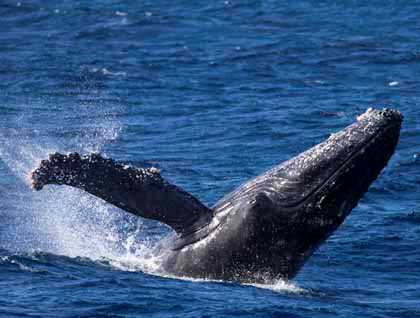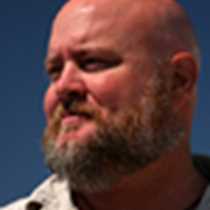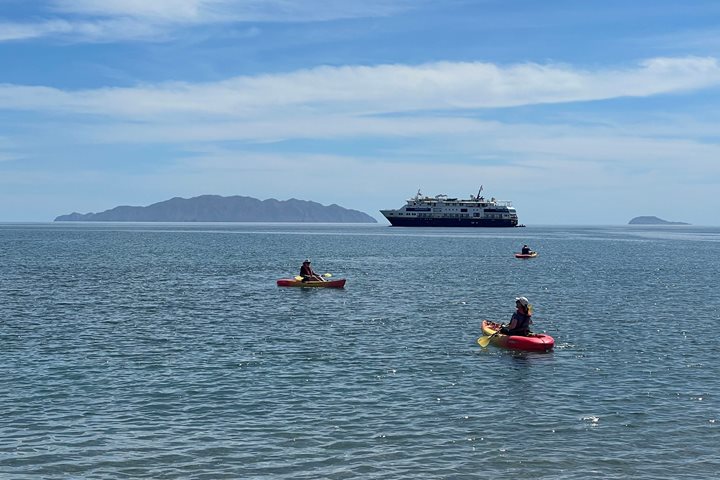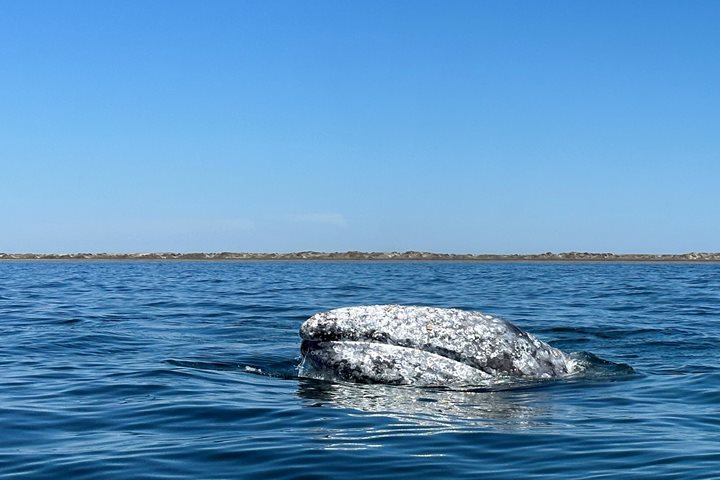One of the best things of life at sea is the opportunity to watch a new day unfolding in a clear, pristine way; today we started earlier than usual and several of us at the bow were able to see a curious astronomical phenomenon, the alignment of five different planets. Yes, during the last moments of darkness in the sky we saw Mercury, Venus, Mars, Jupiter, and Saturn—what a treat! The still-dark shoreline at our portside showed numerous light spots, the abundance and private homes, condos, and hotels of Cabo San Lucas; the former tiny and sleepy fishing village of not that long ago is now a world-class tourist destination that most days opens its arms to several thousands of visitors from all over the world. In fact, we saw one of those visitors swimming alongside us before sunrise. Well, not really a visitor but someone who was born here but now only comes back during the wintertime, a humpback whale.
Then sunrise casted a warm light over the granite rock formations at Land’s End and our captain expertly maneuvered National Geographic Sea Bird around them to look at the area’s symbol the iconic arch of Cabo; many sport fishing boats of all sizes were moving out of the marina into the deeper offshore waters and swarmed around us, while a small group of California sea lions barked from a flat rock next to the arch.
During breakfast we sailed towards San Jose del Cabo and docked at the new marina of Puerto Los Cabos; we disembarked and boarded two motor coaches to either go birdwatching at the San Jose River estuary or visit the town that was founded in the early 1700s as a Jesuit mission. It is a much older and authentic place that its close and flashy neighbor, and we had a great time visiting a glass-blowing factory, art galleries, coffee shops, and many other stores.
After leaving the marina during lunchtime, we headed offshore looking for more humpback whales. The wind had picked up but didn’t stop us from finding several whales. The southern part of the peninsula of Baja California is a well known mating and calving area during the winter for those humpback whales that spend the summer feeding off the coasts of Oregon, Washington, British Columbia, and the Aleutian Islands. Here the females give birth to their 2,000 pound calves, and the males compete with each other to mate with receptive females. Humpbacks are the most acrobatic of the baleen whales and today we had a great time watching some of them breaching many times pretty close to us. Amazing to see a 40-ton creature jumping out of the water! I can’t think of a better welcome to our first day in the beautiful Sea of Cortez.







